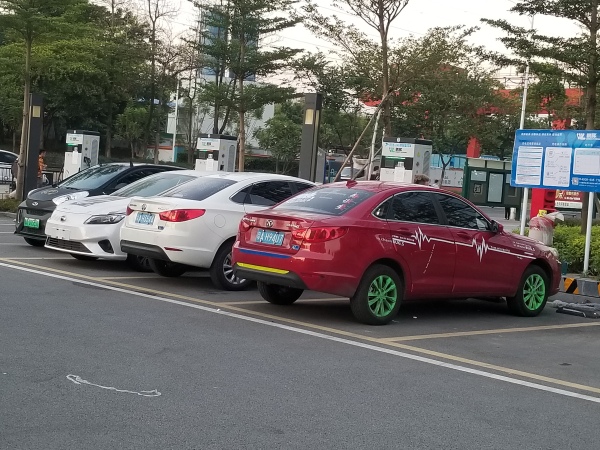China’s EV sector needs concrete revisions in the dual credit policy, not vague comments
Some pretty important statements regarding the future of China’s New Energy Vehicle market emerged from the just-concluded ChinaEV 100 Forum in Beijing. (Full disclosure: I was not there.) But as usual, the central government made only vague statements regarding NEV policy. What it needs to do is revise its dual-credit policy, because the one it has now isn’t working.
At the Forum, Miao Wei, minister of industry and information technology, said China is sticking to its goal of having NEVs represent 25 percent passenger vehicle sales in China by 2025. No surprises there, that was in the revised NEV policy put out for comment in December of 2019.
More importantly, China Daily reported that Miao said MIIT is working on guidelines for the NEV sector, including the dual-credit scheme.
“We are setting a target that new energy vehicle sales will account for a quarter of car sales in 2025,” he said. “It is challenging, but it will make the credits worth more money.”
Setting sales targets for NEVs won’t boost the price of carbon credits. Only a change in how credits are priced will do that.
Selling NEVs – which includes battery electric, plug-in hybrid electric, and hydrogen fuel cell vehicles but for all intents only means BEVs and PHEVS right now – is already challenging in China. NEV sales in 2019 dropped four percent to 1.21 million in 2019 compared to 1.26 million in 2018.
Sales are dropping in China’s overall light vehicle market due to a slowing economy and uncertainty due to the U.S. China trade war (the two are linked, obviously, though the trade war is not solely or even primarily responsibly for the economic slowdown).
But the slowdown in the overall market is not the main cause of the drop in NEV sales. The culprit is more than 60 percent cut in purchase subsidies for NEVs in June of 2019.

Public charging posts in Guangzhou
Though China’s central government is not going to return to the substantial NEV subsidies of past years, Wei did say that subsidies would not be cut more in 2020. That gives the NEV market some breathing room while the government tweaks details for the dual-credit policy, which it figured would be the driver behind NEV sales post-subsidy. What we don’t know is what those tweaks will be.
China’s approach to encouraging automakers to produce more NEVs is two-pronged. Its Corporate Average Fuel Consumption (CAFC) requirement – the equivalent of CAFÉ – compels automakers to produce fuel-efficient vehicles or NEVs to meet the requirement. The second part of the dual credit policy is a carbon credits system modeled after California’s Zero Emission Vehicle regulations.
The recently-released revised NEV policy made a vague reference to “optimizing” the carbon credit management system. Well, the policy certain needs some optimization. The suboptimal aspect of the current carbon credit system is that automakers can offset crummy fuel efficiency by producing battery electric and plug-in hybrid electric vehicles. Domestic automaker for the most part don’t have the technology to make their internal combustion engine vehicles fuel efficient enough, so rather than invest in that tech they produced a lot of BEVs (which earn more credits than PHEVs). That created a credit supply glut.
One way Tesla used to make a lot of money in California is by selling its excess ZEV credits to automakers who didn’t have enough of them. China envisioned the same kind of market developing there. That would help pay for the production of electric vehicles after subsidies were reduced and eventually eliminated.
But the supply glut reduced the price of credits too much. “You want to replace the subsidies with the credits, but now the credits can’t be monetized because there are too many credits,” Yunshi Wang, director of the China Center for Energy and Transportation at the University of California at Davis Institute for Transportation Studies. Wang helped China devise its ZEV policy.
For sure, China’s automakers would like a bit more policy clarity. Dong Yang, vice president of the China EV 100 think tank, reportedly asked the central government to “give automakers something they can expect. They need a stable policy and environment.”
Non-monetary policies were such as preferential vehicle registration and a sales tax exemption have been as effective as the purchase subsidy at promoting NEV sales in some cities. The new plan encourages local governments to continue with preferential registration policies and indicates the sales tax exemption will continue. Automakers at the China EV 100 Forum apparently weren’t shy about advocating for them to keep going, according to China Economic Net.
Beijing is in a tight place. It needs to put out some preferential policies to promote NEV sales. It has already admitted it won’t reach its initial lofty sales targets for this year but it isn’t giving up on longer-term goals. I figure it will lean on local governments to continue preferential policies. Those policies benefit local governments in locations where there are automakers anyway. Automakers will also continue to sell BEVs to ride-sharing fleets, mostly of their own creating. That is a more dubious route and has to be replaced at some point.
More tricky is revising the dual credit policy in such a way that the price of credits rises and automakers can make some money from selling them. Given the headache-inducing complexity of California’s and I’m sure China’s ZEV credit system, that will be quite an arduous task.